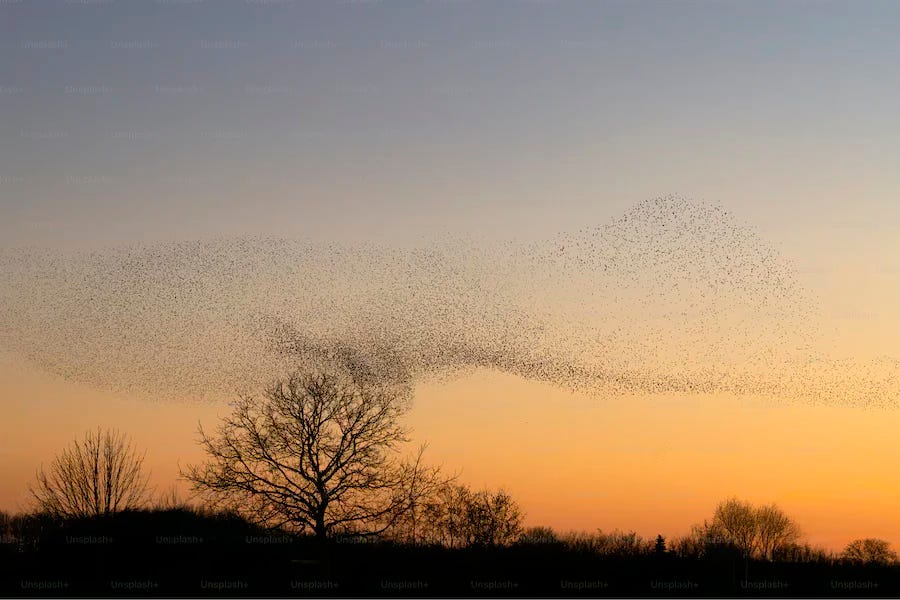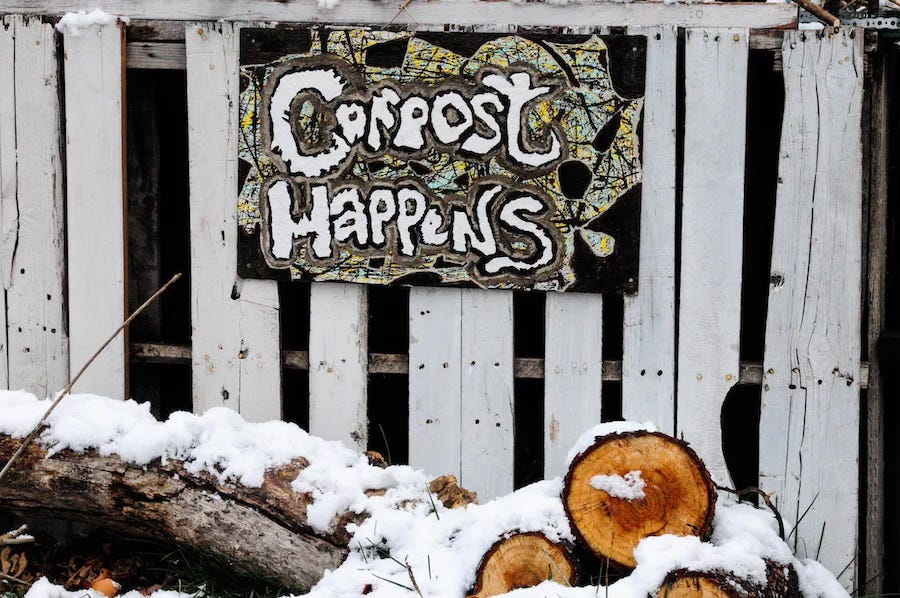Autumn arrives in subtle stages, which I appreciate. It’s a slow and methodical transition. My home is nestled in a valley in the mountains of western North Carolina. It’s tucked back along a winding road that parallels a creek. The cell phone service drops out about a mile from my home. I view that as a positive. Less static from the outside world. More time to be with the moments that sit in front of me.
In September, from where I sit on my deck with a hot tea, I notice the mornings turn cool and crisp. Yet the garden still grows rapidly. Tomatoes, kale, herbs, and carrots honor their jobs and keep producing. The strawberry patch multiplies cheerfully. The birds gather during various parts of the day in large groups to form a game plan of how they’ll navigate the transition. I listen to their conversations. The afternoon sun warms the Earth enough to allow those last wildflowers to shine bright. I start to clip and hang herbs.
In October, I continue harvesting the remainder of my herbs as the fog rolls in at a steady pace. This occurs only in the mornings and it’s only in the valley. My kids call it “steam,” and every morning it sits low in the valley. It slowly rises and fades as the sun inches its way above the nearby range. Once those rays cast light over that mountain the steam evaporates, manifesting the cycle as a dance of sorts. Next, the leaves take note and start to shift. Everything on cue. I track the first few yellow maple leaves. Then giant quilt-like patches of yellow, red, and orange appear on the mountain side.
In November, the animals feel the shift and prepare. Instinctively, the hibernating beings gather what’s needed and store it underground safely. Their systems are in place. There is great preparation needed in order to thrive during the long, cold, dark months ahead. Each region requires a unique method coded within each being.
The shift in season is calling all creatures to pay attention. Not to the external world, but to the internal world. The animals and humans who live closest to the Earth are the ones who can feel the call. They listen and respond.
We are about to bid good-bye to autumn as we approach the winter solstice. This year the solstice will land on December 21st. The winter solstice has been celebrated around the world for thousands of years in many different cultures. It’s the darkest day of the year. It's a time to reflect. Go inwards. Honor the challenges. Appreciate what is. Rest. Gain clarity. Set intentions.
The intention is the seed, the action is the water. What do you want to grow?
Back to the Garden
I bundle up to walk out to my garden. The barefoot days are gone. I wear layers, a wool hat, boots, and a thick sleeping bag jacket. Walking out my backdoor to the freezing temperatures is startling. The cold is my least favorite. I pause to feel the stillness. The land is silent this time of year. Most of the birds are well on their way to warmer climates. I miss the barn swallows. Their absence is felt. Their architecture skills are brilliant. I watch them build nests in the barn each summer. They embody a bit of cirque du soleil energy as they swoop through the air catching insects. Those sweet friends are on their long journey to their winter home in South America.
I send my gaze to the west. I'm immediately drawn to the compost pile. It needs churning. I grab the shovel. I toss and mix the organic matter to add oxygen. The pitchfork is needed next to better aerate the pile. Increasing air flow will increase evaporation. It’s important to keep an eye on the moisture level.
Compost is essential for a garden. Soil health is often disregarded or forgotten, but the health of the soil will dictate the nutrient density of what is grown. Composting reduces the need for pesticides and fertilizers. Because compost enriches soil and promotes healthy plant growth, plants grown in compost-rich soil tend to be more resilient to diseases, pests, and fungi. If you haven’t started composting yet, no need to fret. You can start now. It’s easy. Below is a very simple formula. Follow the method, churn weekly or bi-monthly. When spring arrives you can dump the darkness onto your garden. The decayed matter will work its magic.
A compost pile houses Earth’s chemist. Nature knows how to transform molecules. It’s truly remarkable. You don't need containers of fancy equipment. Composting without the confines of a container can take place in two basic ways: above ground in a freestanding pile or below ground in a hole. As your garden skills grow, it’s reasonable to transition to a three bin system. I plan to build one in the spring from repurposed pallets. I’ll share that process then. For now, let’s keep it simple.
4 Steps for Backyard Compost
1. Find your ideal spot - find a dry shady area that is away from your house
2. Build the pile- alternate layers of yard and kitchen waste. Check out the proven formula below!
3. Mix often and keep it moist- the more often you mix or turn your pile, the faster it will decompose. Use a shovel or pitchfork. Be sure to mix the pile thoroughly once a week or bi-monthly. Add moisture (simply water it) if you notice the pile becomes dry.
4. Cover to retain heat, moisture, and nutrients- cover the compost pile with a tarp or sheet metal. This will trap the heat and aid your compost in cooking. It will also prevent nutrient loss in case it rains. While rain is a welcome sight for your plants, it will wash the nutrients out of your compost and deposit them into the ground below.
Proven Formula:
10% high carbon input - think brown or woody materials such as autumn leaves, wood chips, sawdust, and shredded paper
30% medium carbon-nitrogen input -think coffee grounds and food scraps without meat and grains
10% high nitrogen - think green plant clippings such as grass or weeds or chicken manure
Final Thoughts
While I compost for my garden, I can’t help but think of how the challenges we face also serve as compost for life. The compost can be used to bring about the next big bloom. It can fertilize the next beautiful chapter.
Much love from my heart to yours!
~Grace
If you’re getting value from reading Let Nature Teach, please consider supporting it by sharing, subscribing, or leaving a comment below. I’d love to hear from you.









Beautiful imagery! Love the photos too.
You have beautifully written about the beautiful transition of season. This prompts me, in a third world country where we don't have as beautiful four seasons as you do, can I write something this beautiful about what we have? I shall try.